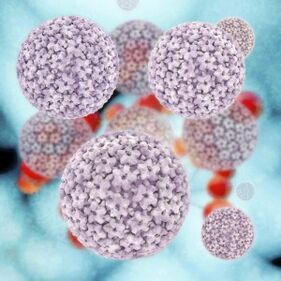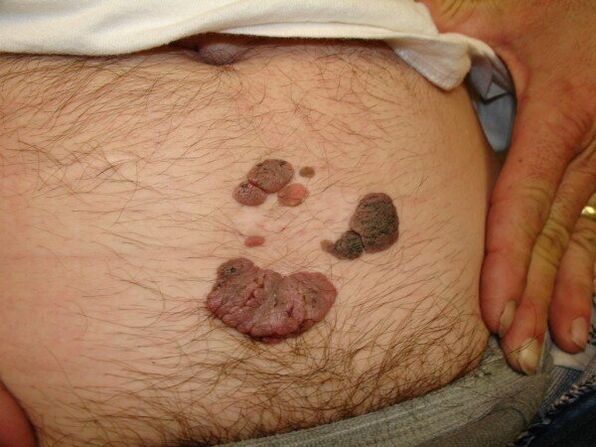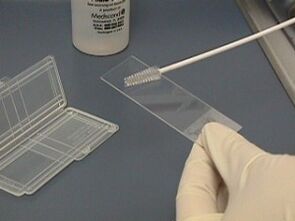Papillomavirus infections are widespread throughout the world. HPV infection occurs regardless of age and sex, but its course and development are distinct in males and females.
For people with strong sexual desire, papilloma virus will bring certain obstacles to sexual life and cause related health problems.
reason

HPV has such a microscopic structure that it can enter the body through the tiniest microcracks in the skin and mucous membranes.
In this regard, there are several possible HPV infections, which are:
- sexually transmitted. You can get infected not only through ordinary close contact, but also through oral contact. In gay men, HPV enters through skin cracks and the rectum through anal contact. Trauma to the mucous membranes during sexual intercourse increases the risk of infection.
- Household routes of infection. The virus can survive in humid environments for a long time, so it is likely to be spread in bathrooms, saunas through personal towels. Described cases of infection in beauty salons where rules for sanitizing manicure sets and other tools were ignored. The virus may be spread through dental or operating room instruments.
- From mother to baby during childbirth.
Men who change sexual partners frequently are most likely to be HPV positive.
It is believed that the younger a girl is, the more likely she is to have a papillomavirus infection in her system - most detected infections occur in those under 25 years of age. Virgins can also get HPV because oral sex and other types of sexual intercourse usually precede traditional sex.
Unfortunately, barrier contraception, namely condoms, does not provide a 100% guarantee of preventing HPV infection. This is because this microbe easily penetrates the pores of latex due to its smallest size. Naturally, condoms reduce the possibility of a possible infection, but they don't completely eliminate it.
It should also be remembered that a certain amount of microorganisms are found in saliva, so they can be transmitted through kissing.
Men with bad habits may have an increased risk of getting HPV. After long-term treatment and antibiotics, the likelihood of infection increases as the body's defenses weaken.
symptom
The fact that he is a carrier of papillomavirus, one may not doubt until the vital activity of this microbe is activated. The reason for this change is usually a weakened immune defense.
Latent carriage of the infection takes anywhere from two weeks to a year, and in some cases this time interval is significantly longer.
Activation of the virus causes some of them to accumulate somewhere on the skin or mucous membranes. Accumulation and progression of papillomaviruses alter epithelial cell function, resulting in a tumor-like process.
Papillomas can form almost anywhere on our body, most commonly they become apparent when they appear in the armpits, face, neck and genitals. Sometimes the process of papilloma formation is accompanied by itching and burning.

Papillomavirus formations on the body grow in the form of plaques, warts, filamentous bumps on the legs. The greatest danger is genital warts, which in men are located on the penis and can grow around the anus or in the urethra.
At first, these growths often look like small pimples, and in advanced cases, they can fuse with each other to form a cauliflower-like growth.
On its own, genital warts are unpleasant only because of cosmetic flaws. However, if they are not removed and generally treated with papilloma infection, there is a risk that the altered epithelial cells degenerate into cancerous cells.
Sometimes, during intercourse or careless movements, the papilloma is injured, causing light bleeding and soreness. As the immune system strengthens, self-healing usually occurs, ie the papilloma disappears or becomes smaller.
Effect
The consequences of papillomavirus infection in men are very unpleasant and depend on the strain of this microorganism.
If the inside of the urethra is affected, there is a risk of rapid growth and spread of genital warts in the urethra. This leads to its partial or complete blockage, which negatively affects the outflow of urine and affects the development of dysfunction of the urinary organ.
The presence of growths in the glans, around the anus, and in the rectum increases the likelihood of a benign formation becoming malignant.
Rectal cancer is more likely to be detected in men who have unconventional sex. During oral sex, there is a risk of papillomas forming in the throat, manifested by various discomforts.
Men infected with HPV also pose some risk to women in their environment. For wives or other sexual partners, such a man would be the most likely source of infection. When using a towel, bathroom accessories in the home, there is a risk of infection and sister, mother, daughter.
diagnosis method

Determining the diagnosis begins with examination of the patient's external genitalia and entire body.
Doctors must take a past medical history, that is, figure out when these structures appeared in the body, what the patient associates their growth with, and determine if there is some discomfort.
To confirm the diagnosis, the patient must pass several tests, which are:
- A swab or scraping of the mucus lining inside the urethra.
- PCR detection determines the type of virus, and its content is quantified. This analysis is performed after smears, prostate secretions, or blood.
- Biopsy - A study of tissue samples taken during removal of genital warts or from sites of changes in the mucus layer.
- Ureteroscopy helps to visually inspect the urethra for changes.
Men with homosexual contacts are advised to examine swabs taken from the anal area.
Methods of treating male papillomavirus
The choice of method for treating HPV in men depends on the strains of the virus detected in the man.
If a pathogen with high oncogenic activity is detected, an effective antiviral treatment is prescribed and it will be necessary to constantly repeat the test in the future.
Papillomas and genital warts can be excised from the skin and mucous membranes in a number of ways. This can be traditional scalpel cutting or more modern methods - laser therapy, electrocoagulation, radio wave methods.
After papilloma removal, the body's resistance to infection needs to be increased to reduce the risk of contracting another HPV.
prevention
Preventing HPV infection is understandable in sexual relationships and, if possible, having sexual contact only with trusted partners. Prevention methods include following the basic rules in your daily life of using only your own towels and underwear and following a healthy lifestyle.
Infection can be prevented by vaccination. A special vaccine has been developed against HPV that is given as 3 injections at regular intervals. Vaccination causes the body to develop immunity to certain strains of papillomavirus.














































































